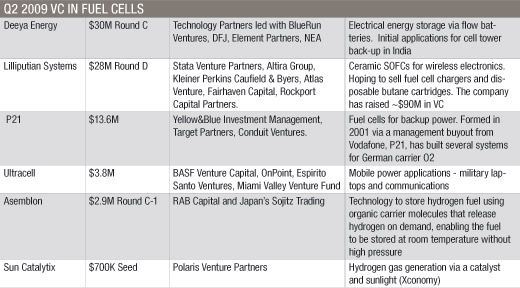I gather Bloom Energy news / rumors. I collect these items and then bounce them off of the Bloom marketing department which politely issues a "No comment" response.
The most recent scuttlebutt is:
- The solid oxide fuel cell firm is focusing on a new business model by engaging customers in a power purchase agreement (PPA).
- The Google fuel cell installation is 400 kilowatts.
Add those rumors to the list:
- East Tennessee will be the location of a 100-kilowatt demonstration fuel cell developed by Bloom that could be a precursor to the potential siting of a manufacturing facility in Tennessee. The system will be at the Electric Power Board HQ in Chattanooga. The project is funded through a federal appropriation as well as support from the Electric Power Board's research and development organization. The system is a 25-kilowatt unit and they put four together for a 100-kilowatt system.
- Their first 100-kilowatt unit went to Google.
- eBay ordered four of the 100-kilowatt units. Adobe may show off a large fuel cell from an unidentified supplier in the near future.
- There are rumors of an enormous government contract and a multi-million dollar order backlog from Coca-Cola and FedEx.
- The units run on natural gas which gives them about 48 percent efficiency overall.
- The San Francisco Airport has Bloom fuel cells in their possession (not a rumor - SFO told me this).
- Their revenue is significant, their profit not so significant.
- Those crop circles in the late nineties? That was Bloom's doing.
For some industry background, here’s a list of the profitable fuel-cell firms:
1.
2.
3.
4.
5.
We've seen at least one VC investment in fuel cells so far this year: ClearEdge Power builds a fuel cell that converts natural gas into heat and electricity. The start-up raised $26 million according to SEC filings -- $15 million last year and $11 million added this year. Investors include Applied Ventures, Big Basin Ventures and Kohlberg Ventures.
Ceres Power in England has close to $75 million in the bank--it will come out with a household fuel cell with utilities in the UK and Ireland that can, in part, be built from diesel engine components, according to Imperial College London professor and co-founder Nigel Brandon. Panasonic already sells 1 kilowatt fuel cells to homes in the Osaka region.
Here's a list of venture capital investement in fuel cells in 2009 -- the list includes flow batteries and companies working on hydrogen technology:




Every fuel cell start-up from MTI (recently de-listed from Nasqaq) to Protonex all the way to multi-nationals like Toshiba have promised commercial fuel cell product for at least a decade and few have managed to reach that goal. (Note: Toshiba and MTI have promised portable methanol fuel cells for laptops and portable electronics, not industrial-scale fuel cells that Bloom and Panasonic make.)
There are absolutley some applications for which fuel cells make sense -- premium power for the military, remote sites, construction industry, travel, etc. But for commercial applications, fuel cells have to compete with conventional sources of energy and that's a challenge for this technology. Then again, policy can help. California has passed regulations that let fuel cell makers sell power to the grid, effectively letting them run 24/7.
So who knows. Maybe the industry will bloom.
Michael Kanellos contributed to this report.